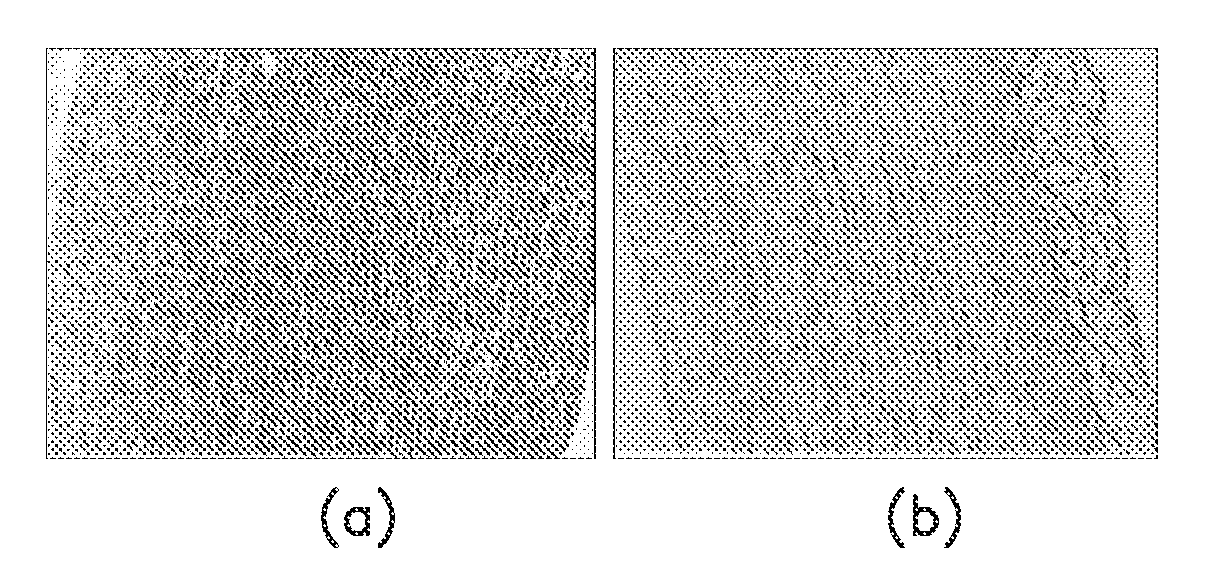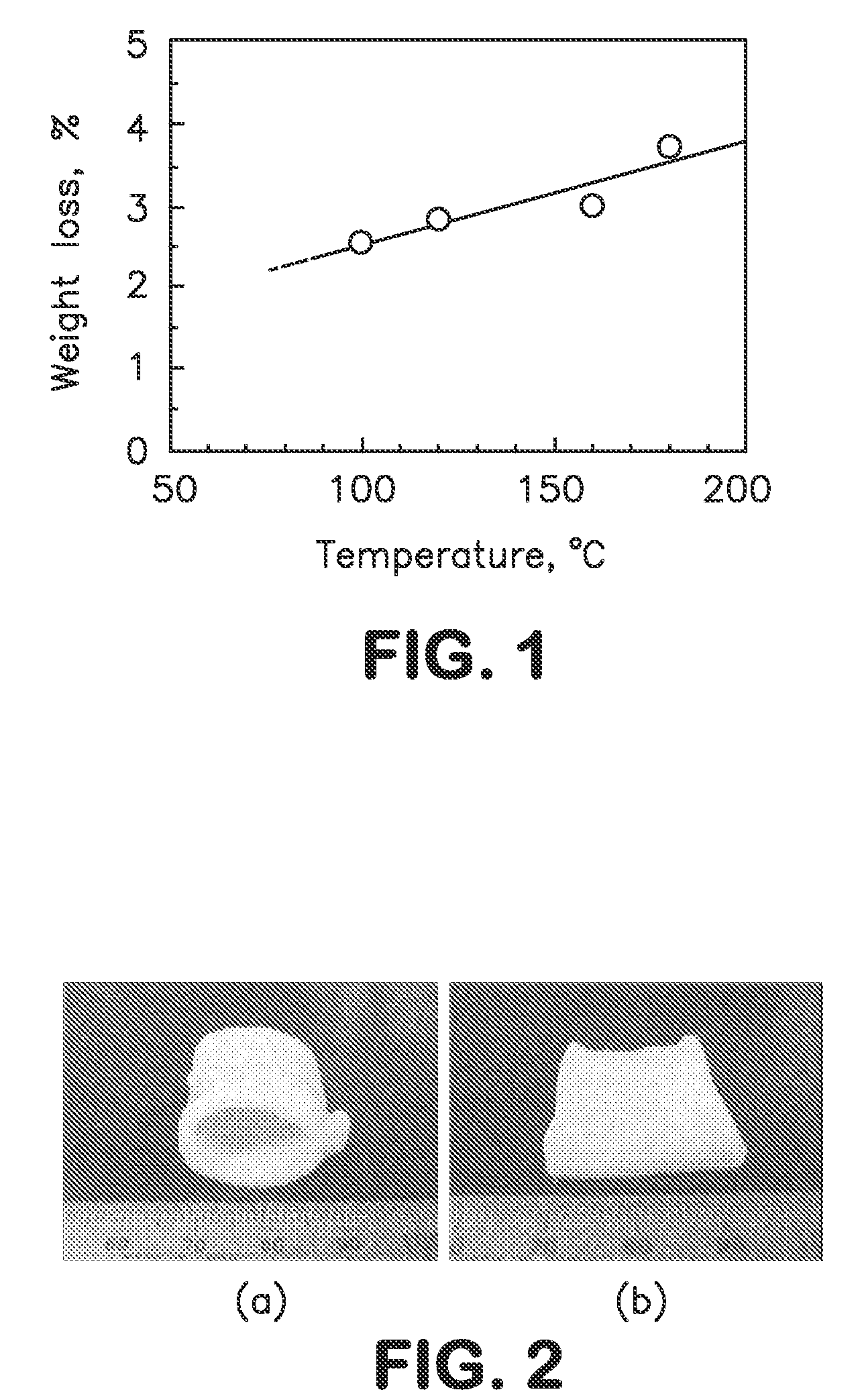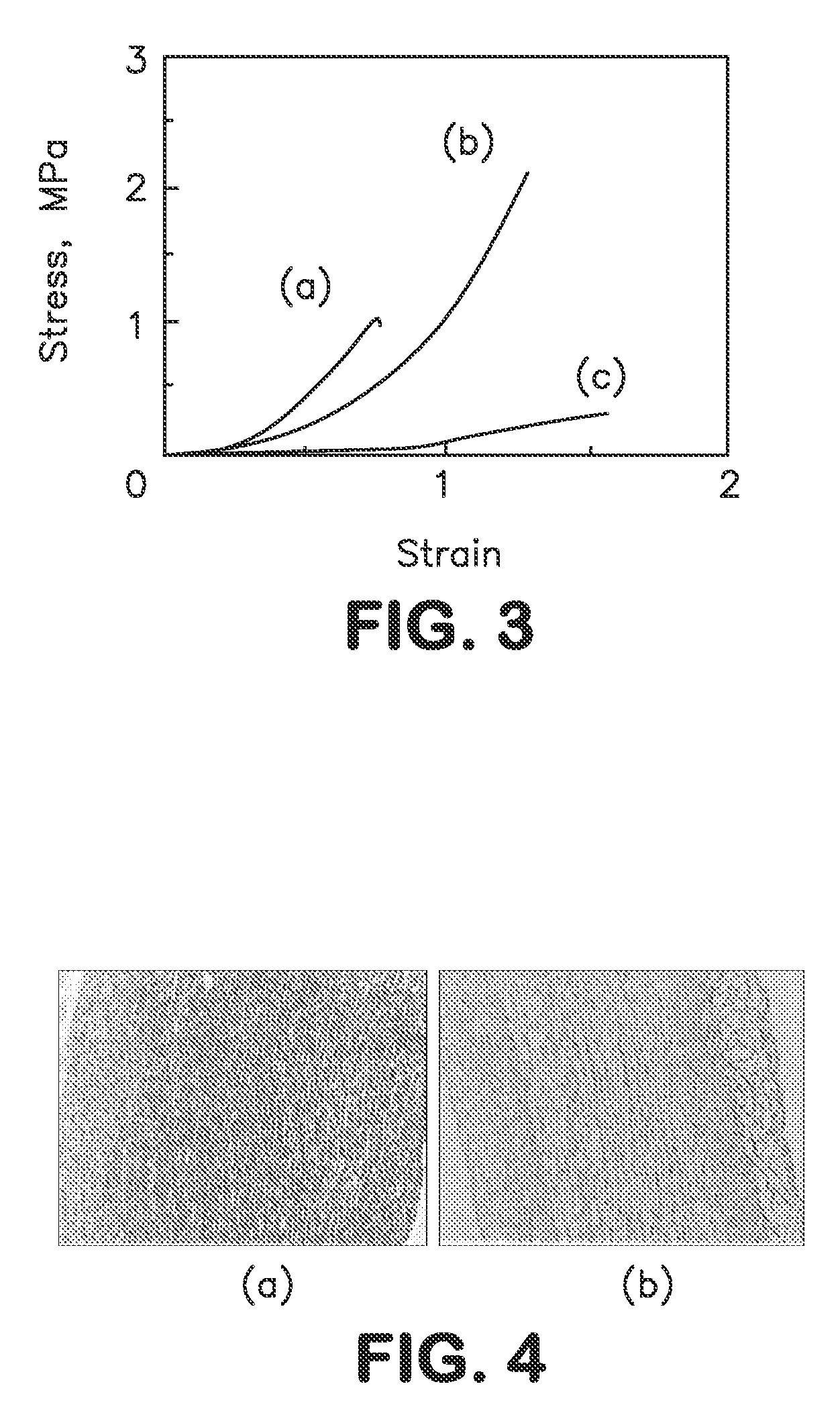Method for preparing biological scaffold materials
a biological scaffold and material technology, applied in the field of biological scaffold materials, can solve the problems of limited life of biological scaffolds, inability to use biodegradable vascular grafts in the artery system, and other adverse effects, so as to improve the biodynamic properties, reduce the immunogenicity of the scaffold, and preserve the mechanical strength of the starting native tissue.
- Summary
- Abstract
- Description
- Claims
- Application Information
AI Technical Summary
Benefits of technology
Problems solved by technology
Method used
Image
Examples
example 1
[0026]Porcine aorta purchased from Japan Farm Co., Ltd. was cut into tubular segments, lyophilized, and heated at 100° C., 120° C., 160° C., or 180° C. for a constant period of time of 24 hours in a vacuum chamber. The weight of the tissue segment was measured before and after the heat treatment to determine percent weight loss at varying temperatures. The results are shown in the graph of FIG. 1. The best result was obtained for the tissue heated at 120° C. for 24 hours when treating with elastase as described below.
[0027]Separately, an enzyme solution was prepared from a commercially available elastase preparation (3.95 U / mg, Funakoshi) by dissolving the enzyme in 0.0 M tris buffer (pH 8.0) to a concentration of 150 mg / L (0.57 U / ml), followed by the addition of 0.01M CaCl2 and 0.02% sodium azide.
[0028]The tissue treated at 120° C. for 24 hours was placed in the above elastase solution, incubated at 37° C. for 72 hours, and rinsed with physiological saline.
example 2
[0029]Porcine aorta segments as used in Example 1 were decellularized by placing in an ultrahigh pressure apparatus (Dr. SHEF available from Kobe Steel Ltd.) together with sterile water and applied a hydrostatic pressure of 10,000 atms for 10 minutes. The decellularized tissue was thoroughly washed with sterile water.
[0030]The procedure of Example 1 was repeated with the decellularized tissue under exactly the same conditions to prepare a scaffold material.
[0031]In FIG. 2, (a) is a photograph of native porcine aorta segment and (b) is a similar photograph of porcine aorta segment treated in Example 1. As seen, the tubular shape of native aorta was maintained after the treatment with heat and then with elastase.
[0032]The scaffold material prepared in Example 1 was tested for strength properties along the circumferential direction in comparison with native porcine aorta and native porcine pulmonary artery. FIG. 3 shows the stress vs. strain curve (a) of the scaffold of Example 1, in c...
PUM
 Login to View More
Login to View More Abstract
Description
Claims
Application Information
 Login to View More
Login to View More - R&D
- Intellectual Property
- Life Sciences
- Materials
- Tech Scout
- Unparalleled Data Quality
- Higher Quality Content
- 60% Fewer Hallucinations
Browse by: Latest US Patents, China's latest patents, Technical Efficacy Thesaurus, Application Domain, Technology Topic, Popular Technical Reports.
© 2025 PatSnap. All rights reserved.Legal|Privacy policy|Modern Slavery Act Transparency Statement|Sitemap|About US| Contact US: help@patsnap.com



